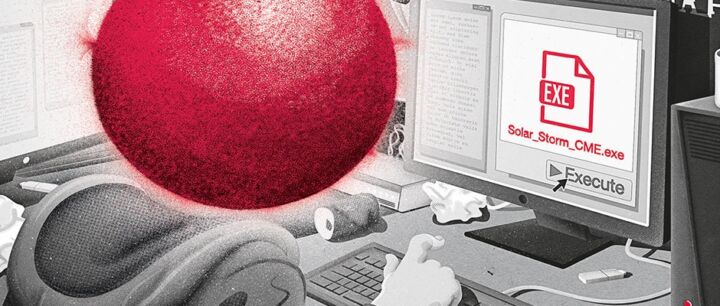A solar storm is a stellar phenomenon that has immense destructive powers as far as humans and their technologies go.

However, fortunately, the same are largely protected by the Earth’s atmosphere; but when a big enough solar storm is generated by the Sun and it arrives on Earth at a much faster than expected speed; it can lead to many problems even today.
The question here to be answered is – can a solar storm make computers crash?
Well, the short answer is yes, but indirectly so.
A proviso must be added here; that the solar flare has to be big enough and it has to knock out certain parts of the infrastructure to reach computers in offices or homes.
A solar storm will have to be big enough to impact the electricity grid in such a manner that; it causes temporary instabilities in power levels, says GSFC Nasa.
“These are not the ‘spikey’ kinds of events that most computer power supplies can protect against; but long-term surges and sags lasting several minutes or hours;” it says and adds, “If transformers get over heated from the induced DC currents produced by geomagnetic storms. then you could end up with localized problems in the grid that supplies your neighborhood.
In Canada they have lots of problems with geomagnetic storm currents; that get induced into their power grid and local brownouts are rather common during strong auroral displays.”
An example of a severe solar storm that can, and do, affect the power grid and trigger actual black outs was the one in Quebec; which happened in March 1989. It caused temporary instabilities in the power levels.
Another factor to look at is that solar storms enhance the radiation levels in space near the earth.
“These particles when they enter the atmosphere produce ‘air showers’ of secondary particles…usually neutrons…which can penetrate down to 35,000 feet and even ground level.
They also penetrate into avionics and computer circuitry and can cause temporary ‘glitches’.”
However, those on Earth may still have something to think about. “At ground level; there is substantially less risk from such glitches, but the risk factor isn’t zero to 50 decimal places either,” GSFC report said.
The third factor deals with satellites.
Computers are increasingly dependent on them as digitalisation efforts of all aspects of daily life increases by the day.
“Satellites do get affected by solar storms, and during a ‘big one’ you can expect your link to become less reliable and even shut-down completely if the satellite is temporarily disabled. This could cause your computer to ‘crash’.”
These are the three major factors that can lead solar storms to affect computers; but then again, it all depends on the severity of the storm.
In terms of measuring risk, it has been noted by GSFC that unless you need 100% precision, the danger of critical damage is minimal.
Support InfoStride News' Credible Journalism: Only credible journalism can guarantee a fair, accountable and transparent society, including democracy and government. It involves a lot of efforts and money. We need your support. Click here to Donate
